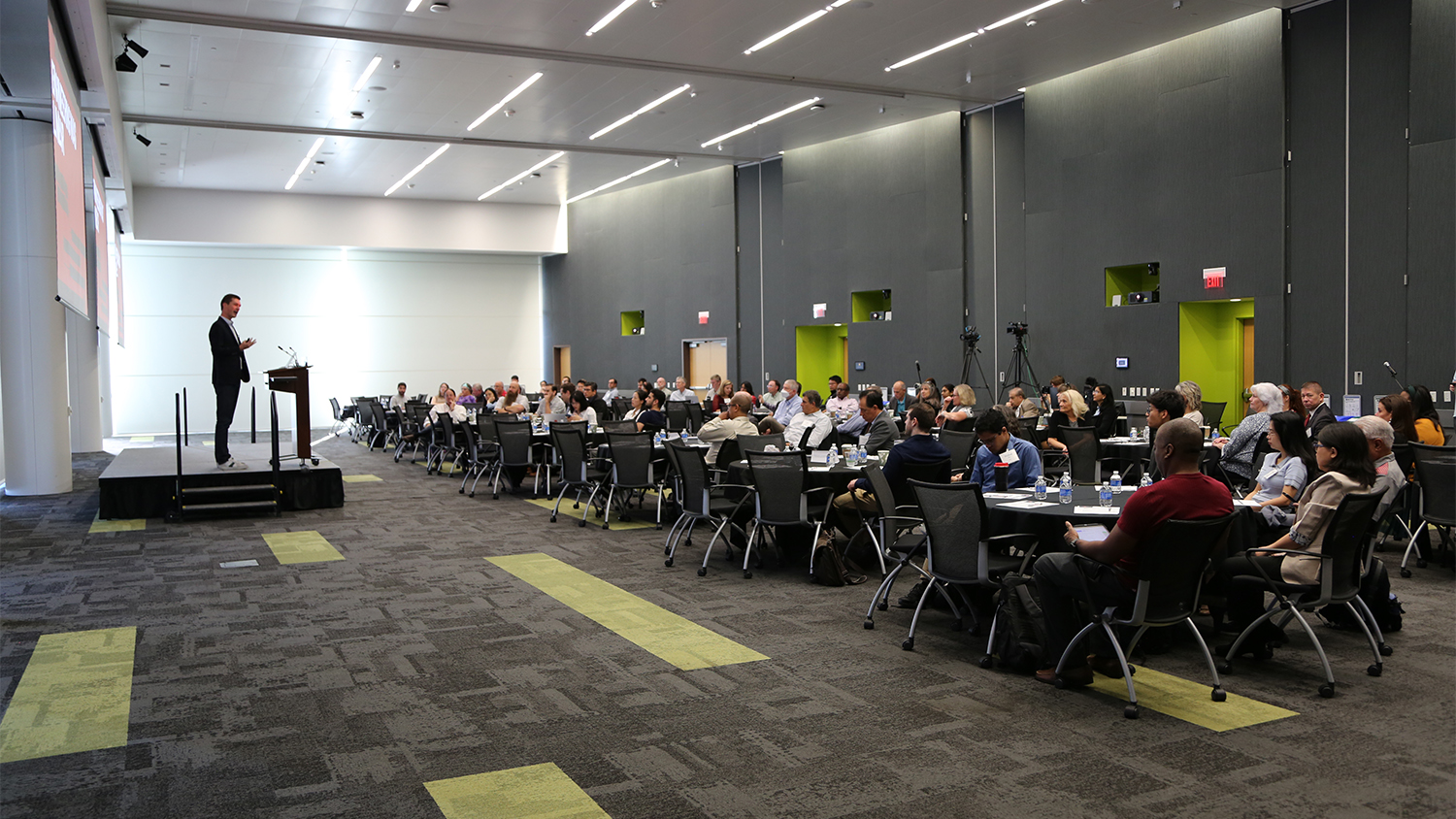On Wednesday, Sept. 18, the College of Engineering brought together industry leaders and our faculty, staff and students to discuss where the college is headed with using AI in its classrooms, research and work. As part of a land-grant institution, it’s imperative that the college is preparing our students to excel in industries that will be transformed by AI.
The day included inspiring keynote speakers, breakout session discussions and research posters. Videos of the talks and panel, and images of the posters, can be viewed on the 2024 Applied AI in Engineering & Computer Science Symposium page. This is an exciting start to where the college is headed and won’t be the last time faculty, staff, students and leaders convene on this topic.

Here are Dean Jim Pfaendtner’s key takeaways from the day:
There is no better time for our college to become a preeminent center for applied AI in engineering and computer science.
With our expansion through Engineering North Carolina’s Future, now is the time to hire faculty members with expertise in applying AI to their research and teaching. Our department heads are on board with this strategy. Beyond hiring, we are thinking critically about what the classrooms and labs of the future will look like in our new engineering building.
We can’t yet see the full view of where applied AI will take us. But we do know data-driven engineering is going to be a critical part of the future.
Even the leading experts don’t know exactly how AI will change our industries. What we need to focus on in our College of Engineering is ensuring our students are skilled in data-driven engineering and that they are comfortable navigating an ever-changing technology landscape.
Collaboration and communication are two important skills our students need to develop.
Almost every speaker emphasized collaboration and communication as critical skills needed to build and use AI interfaces effectively. Our students need to know how to clearly share ideas, details and context not just while developing AI technologies, but also when talking and listening to end users.
Our faculty, staff and graduate students are already working on the cutting-edge in applying AI to their research.
We have a strong base to build off of, and the breadth and depth of research on display was inspiring. Our faculty members and students are creatively applying AI to so many disciplines. Posters mentioned just about anything you could think of: guide dogs, DNA storage, robotic limbs, historical Arabic documents, yams, autonomous vehicles, materials discovery and so much more.
AI is a key tool in making learning more effective and engaging.
One-on-one tutoring and narrative-centered learning are two of the most effective learning experiences. AI is a powerful tool that can scale up the use of both in classrooms to help students remain engaged and motivated, and I am excited to see our continued developments in this space.
Investors are interested in AI, but a lot of work needs to be done to ensure infrastructure is ready.
There needs to be a massive shift to increase our global data storage capacity so that all industries and academic settings can embrace and integrate AI into their work. As LLMs took off, it put more and more pressure on our power grid and resources. Part of moving toward an AI-driven future is ensuring we have the infrastructure to support it. Our college has been working for more than a decade to develop the power grid of the future through the FREEDM Systems Center.



